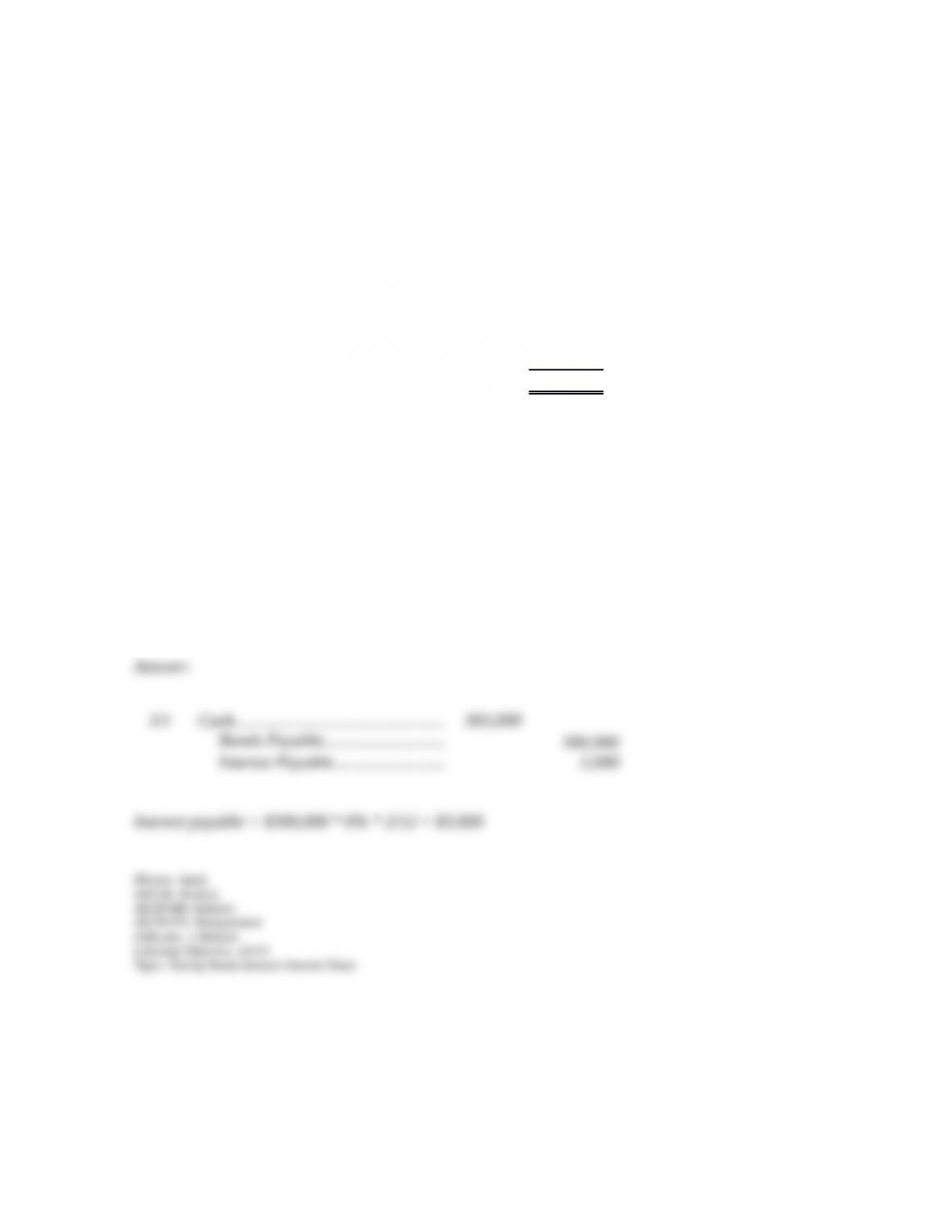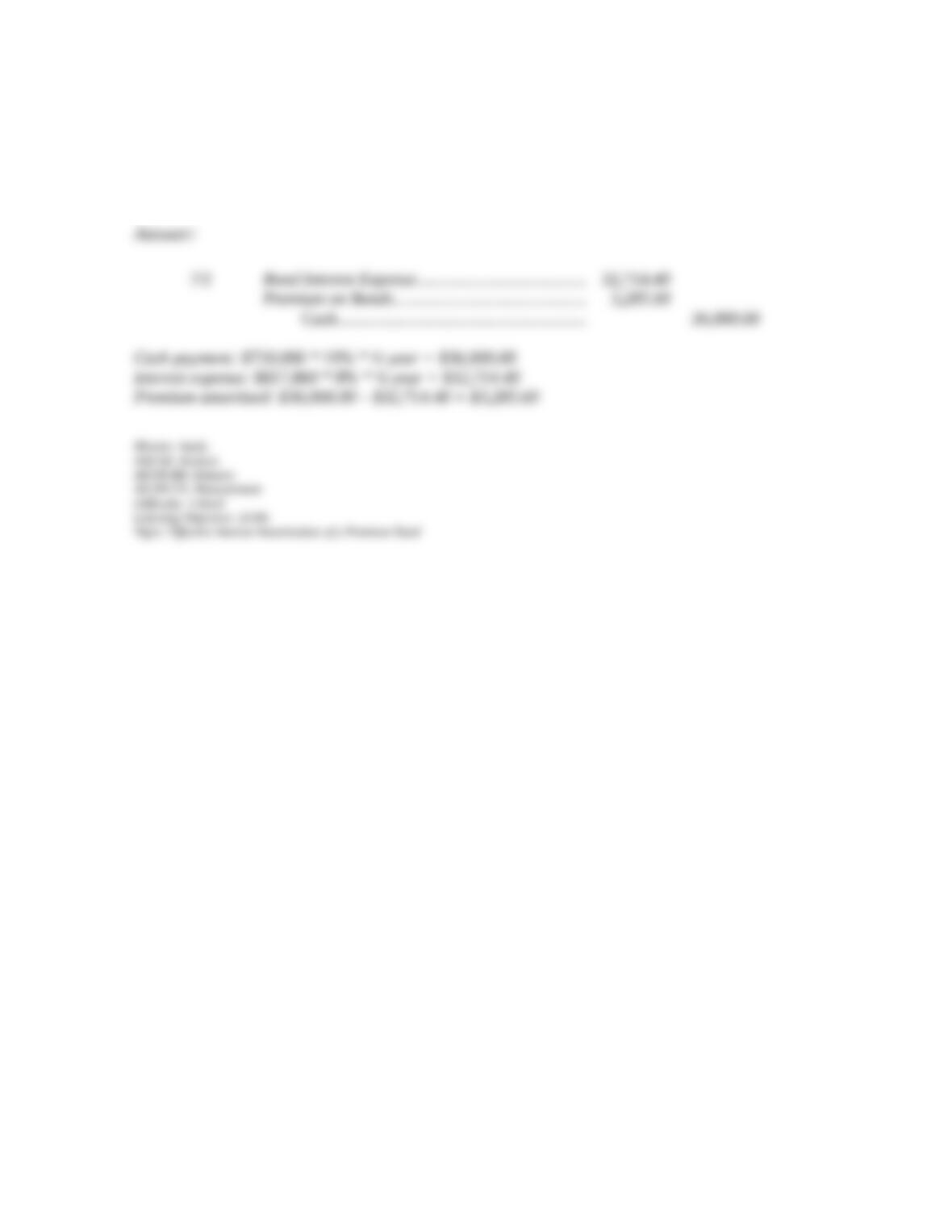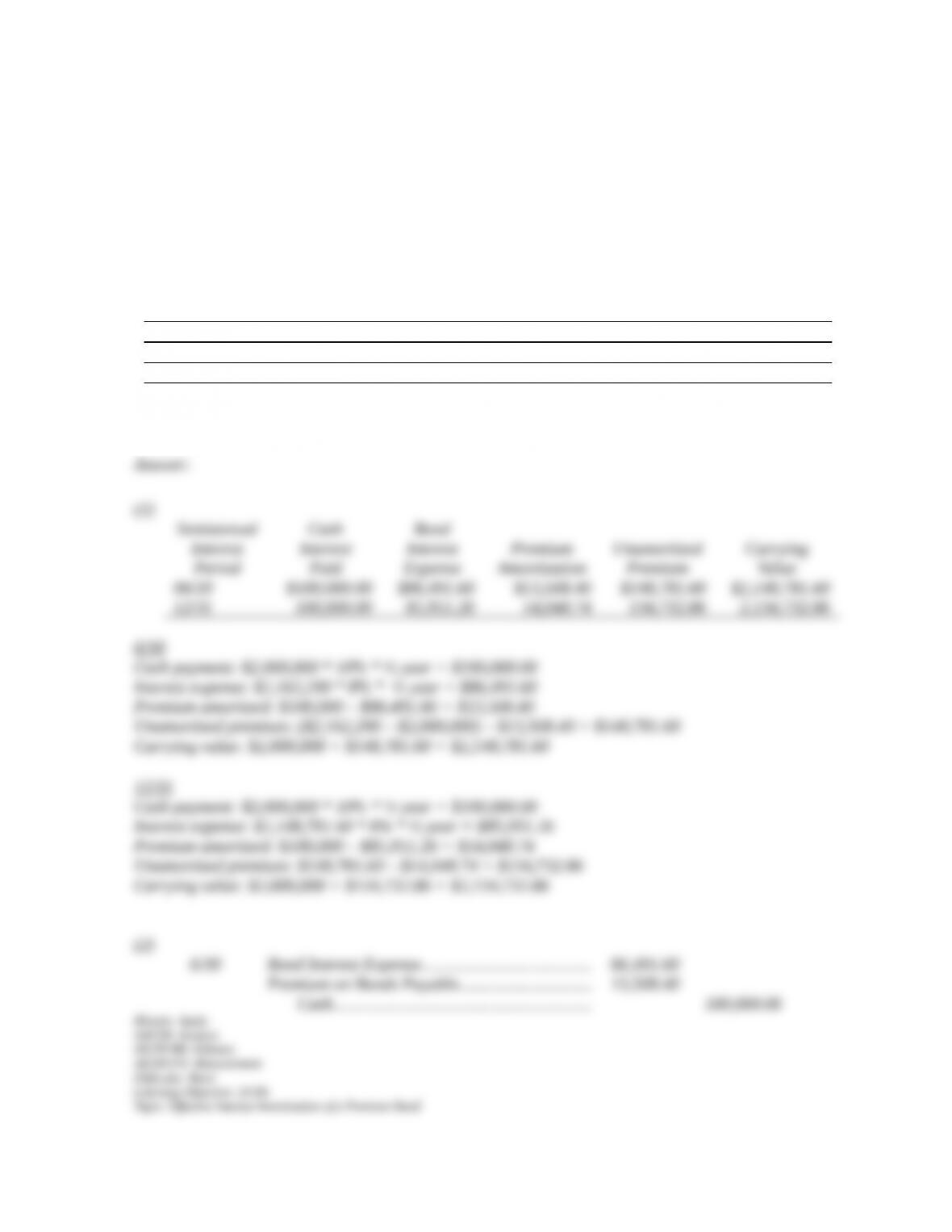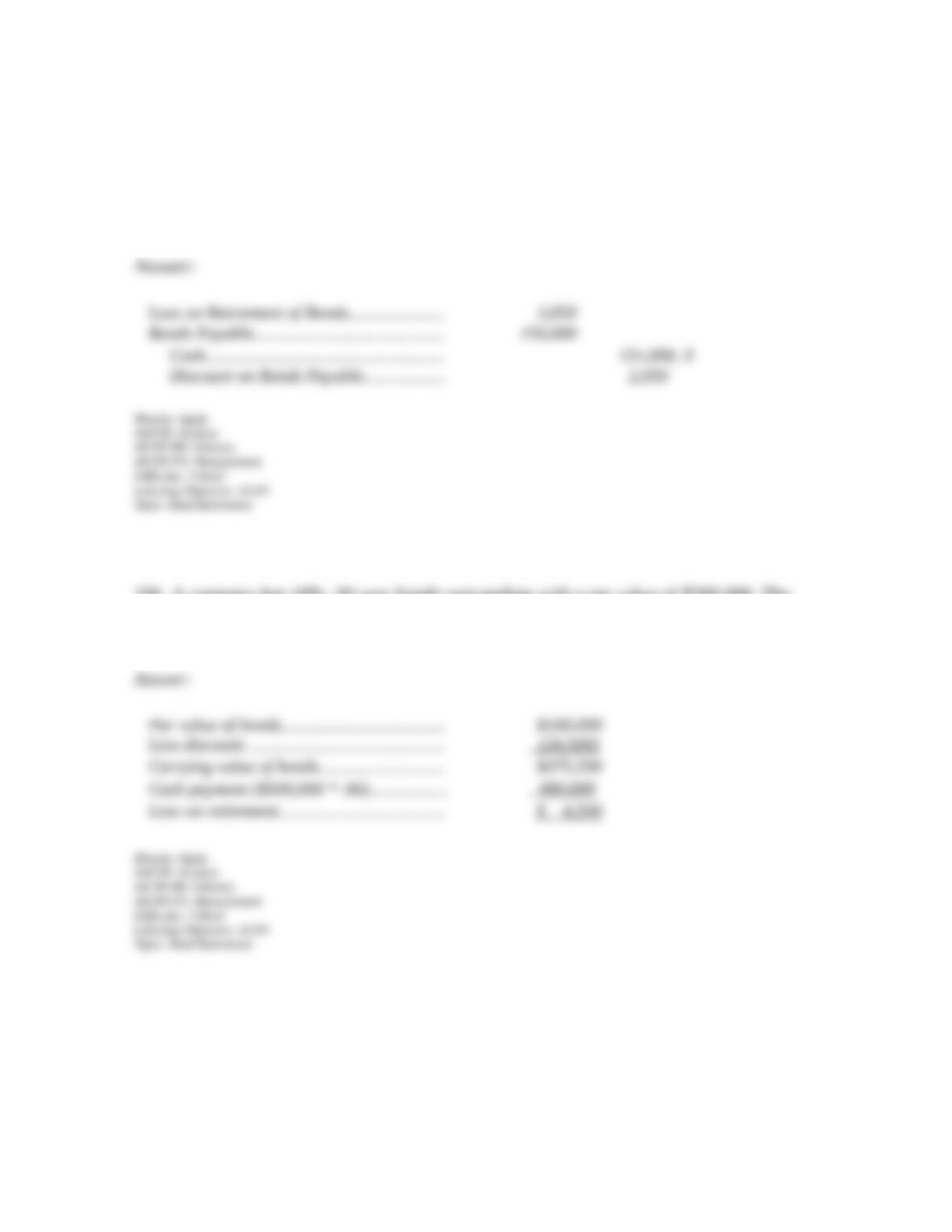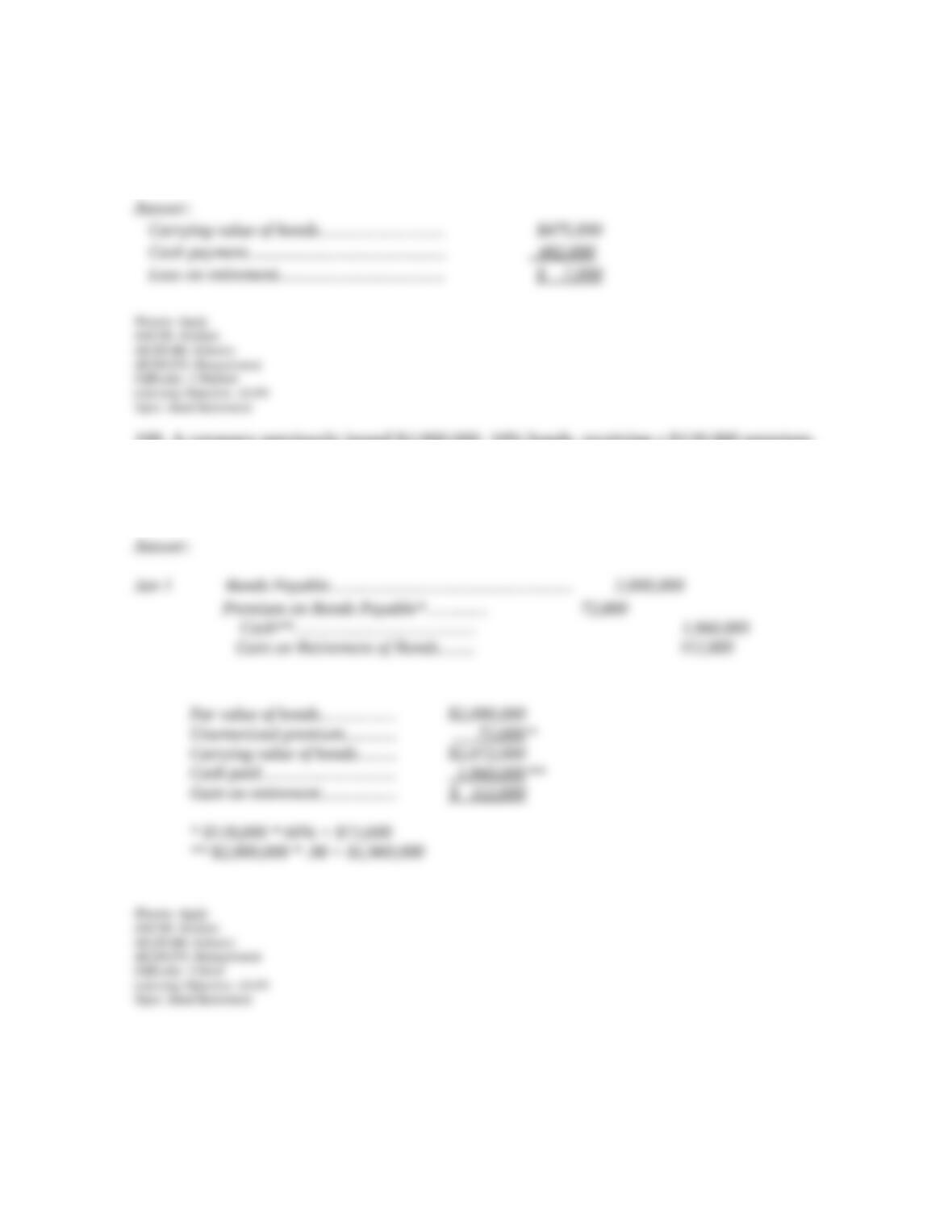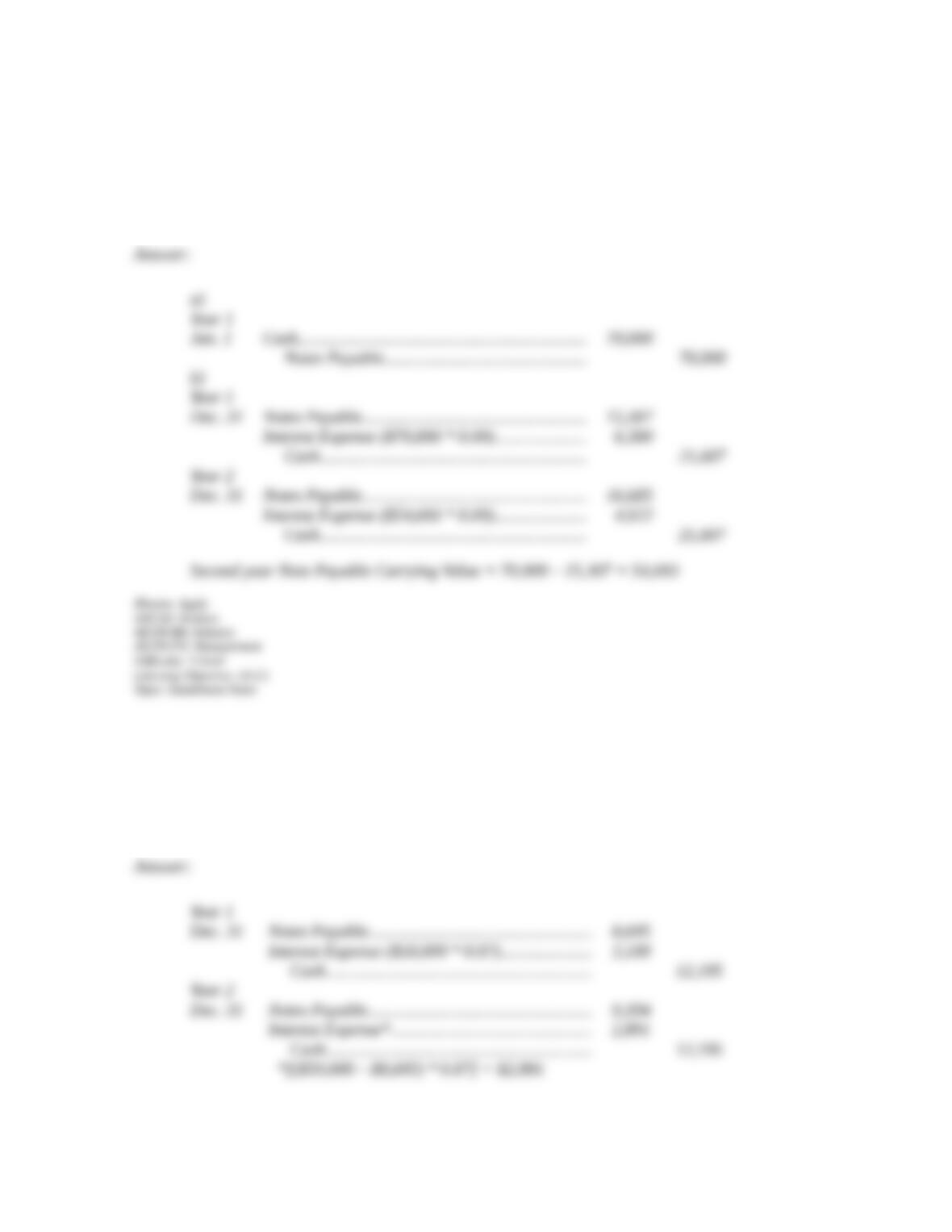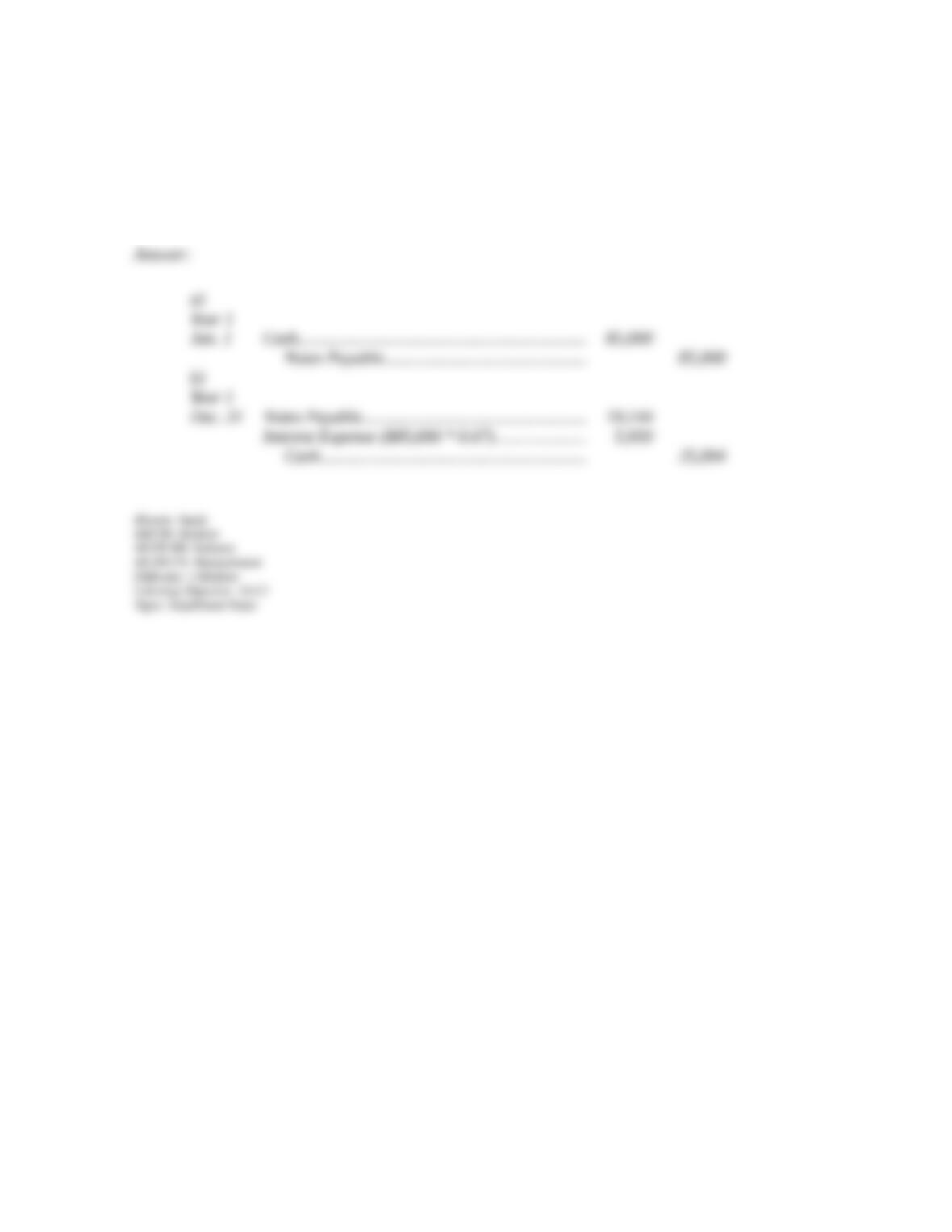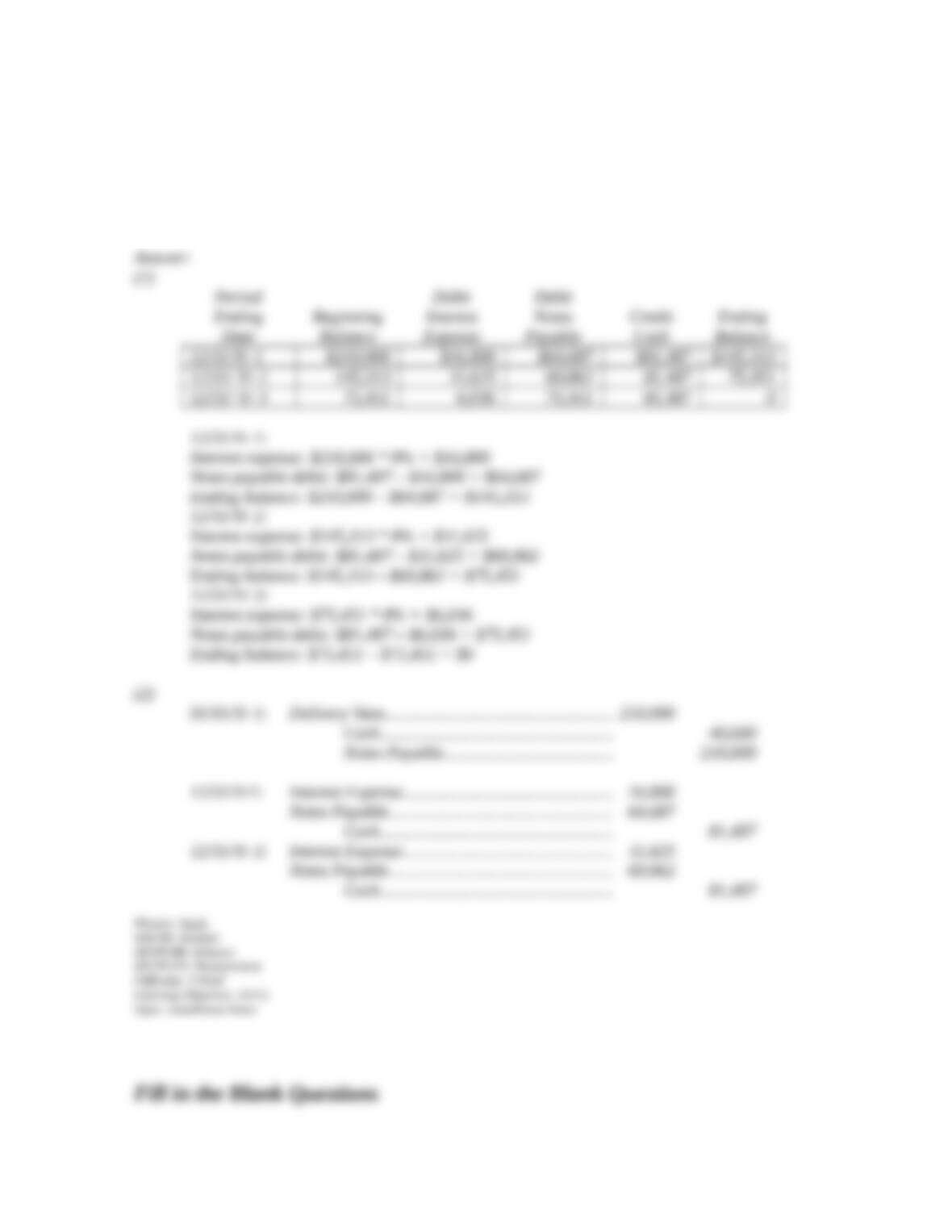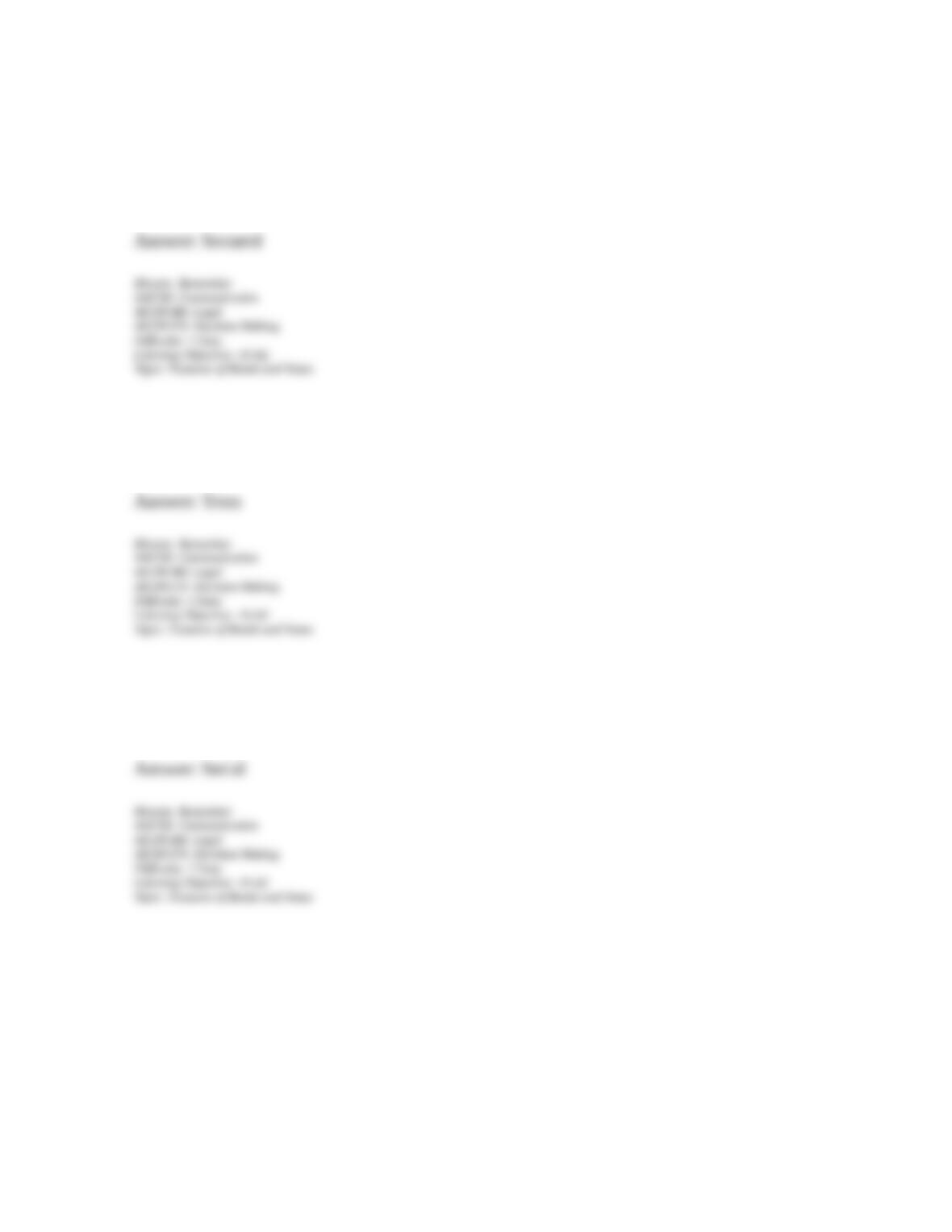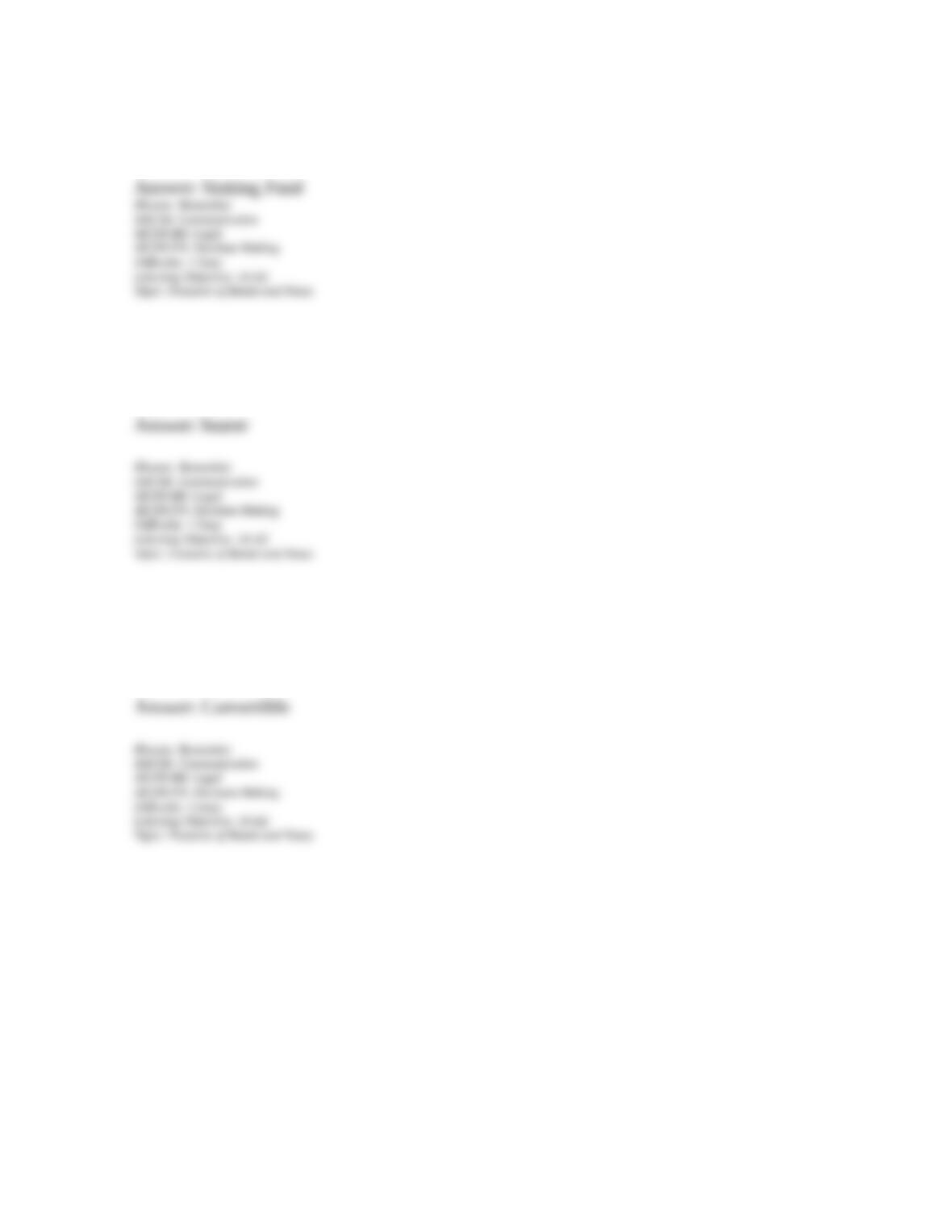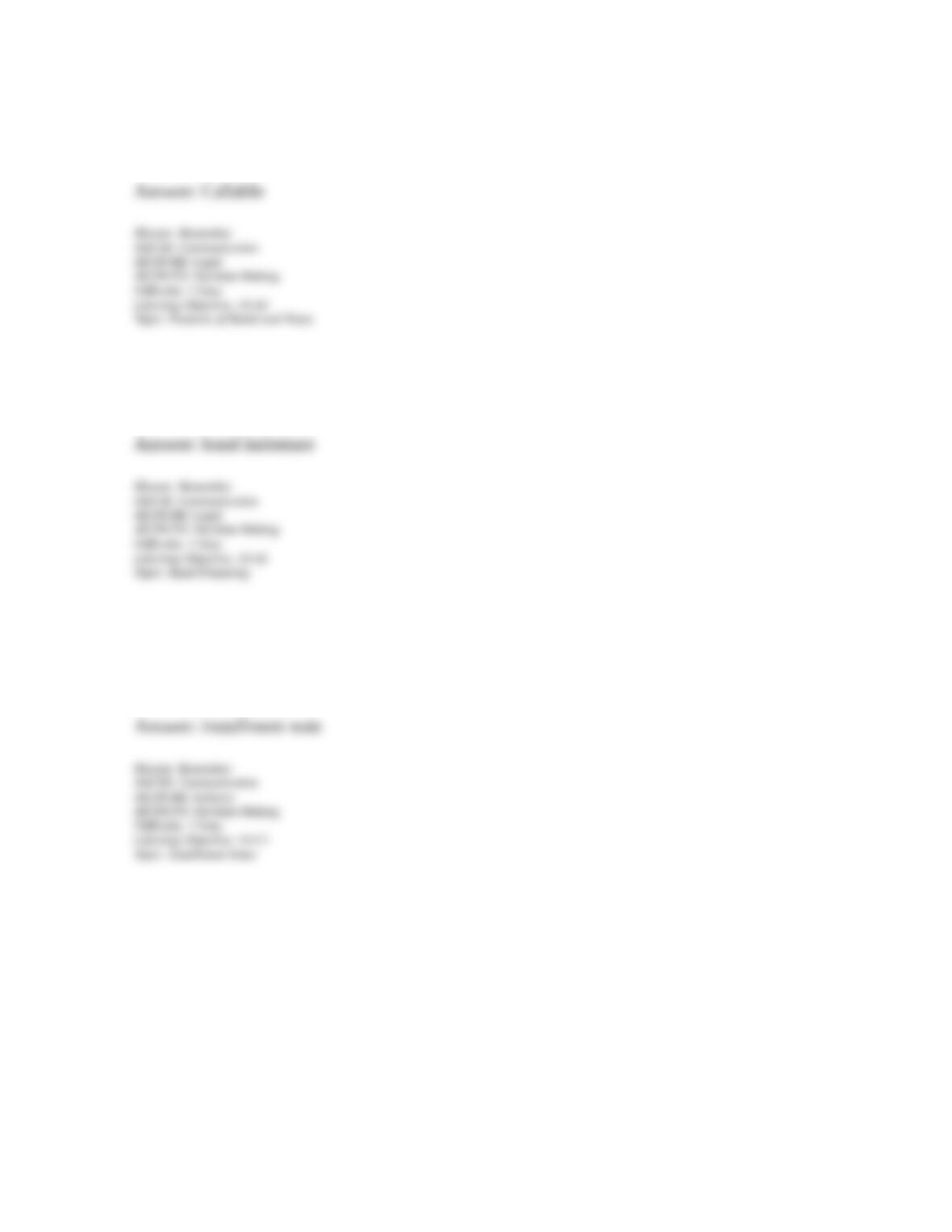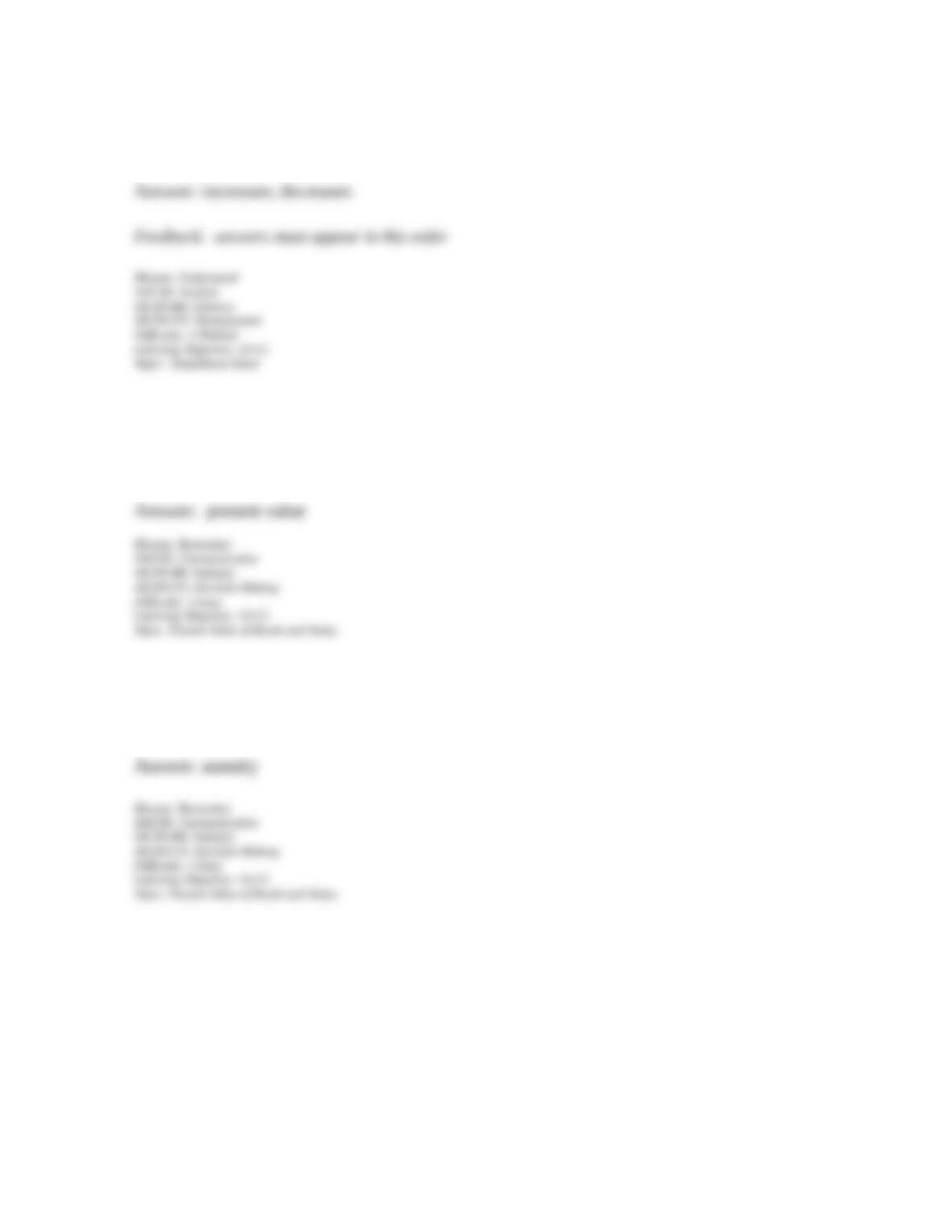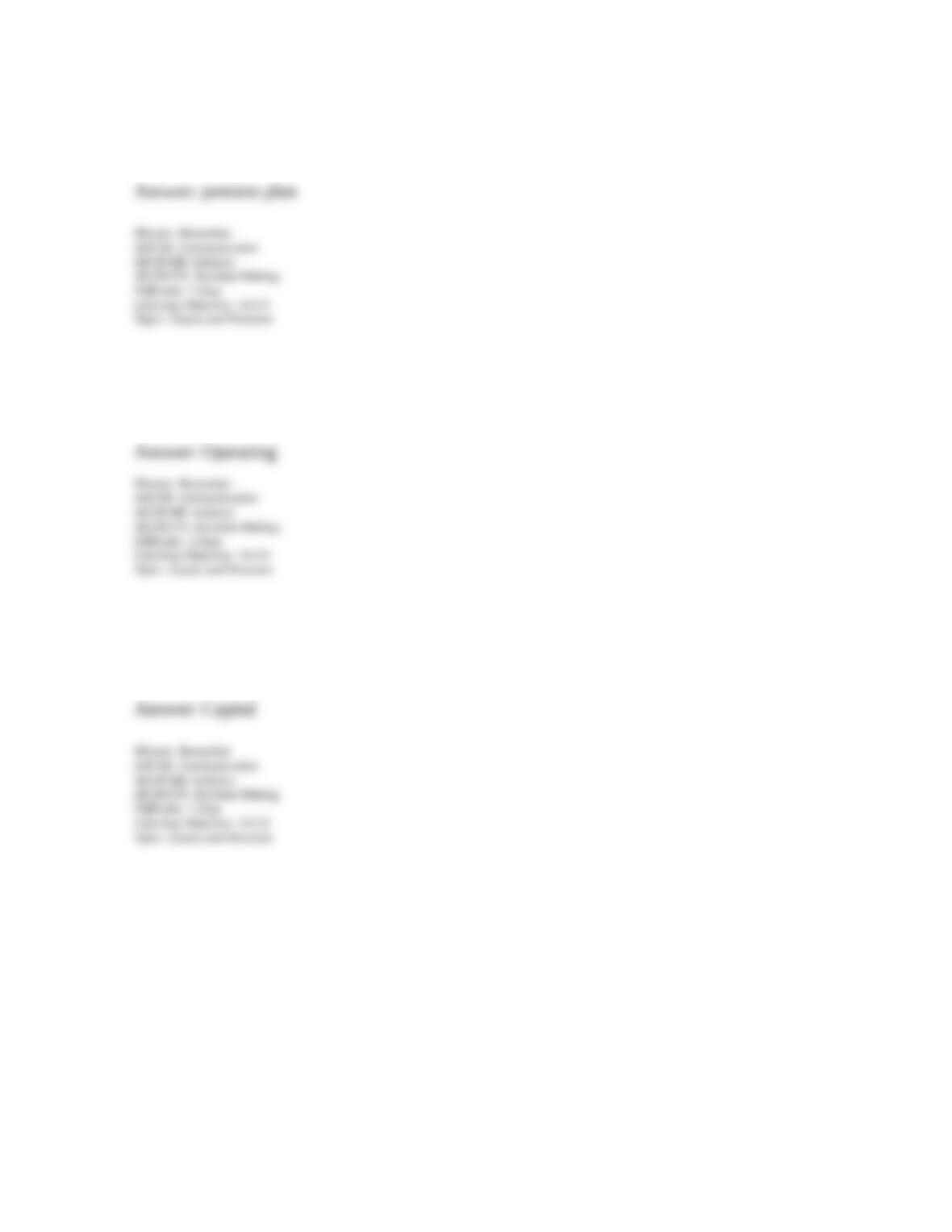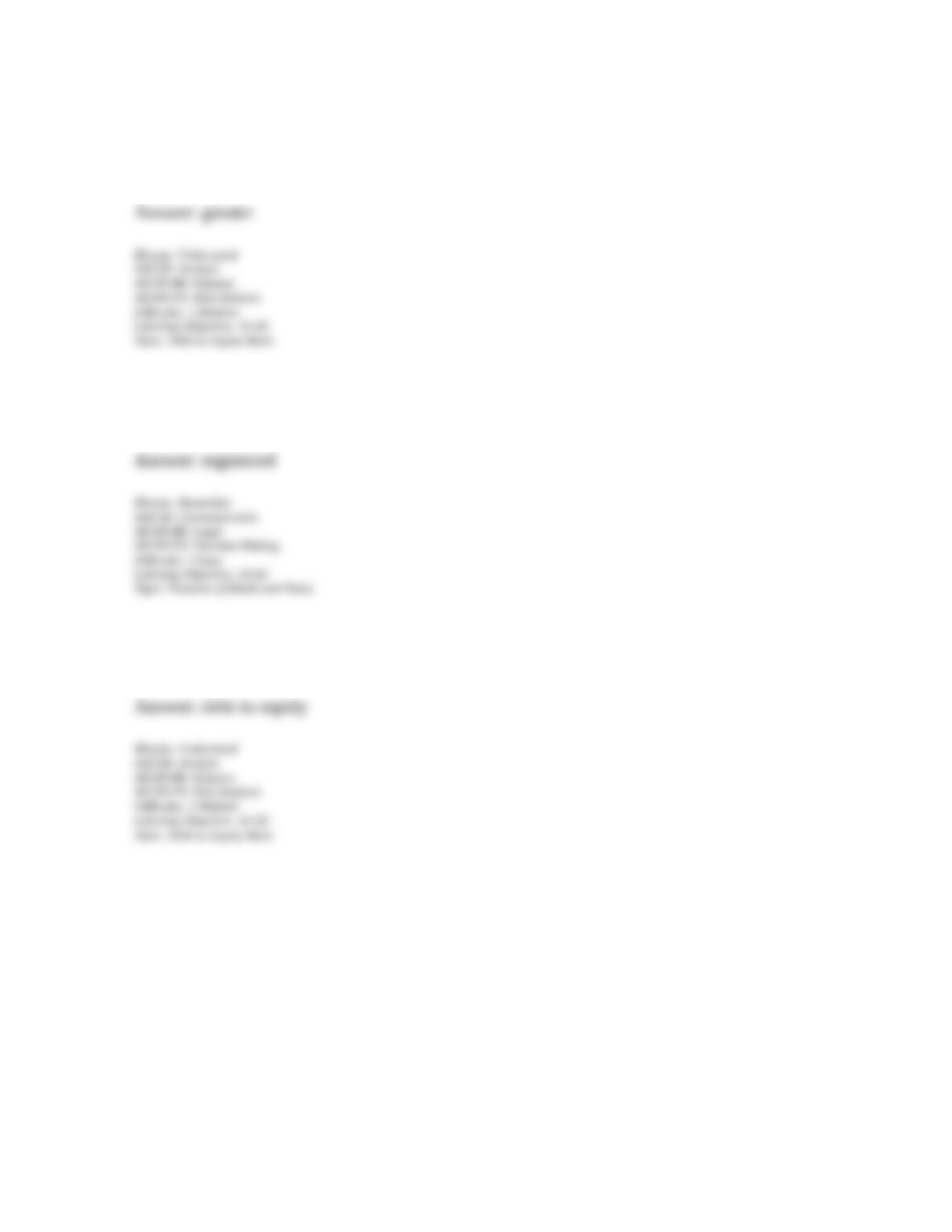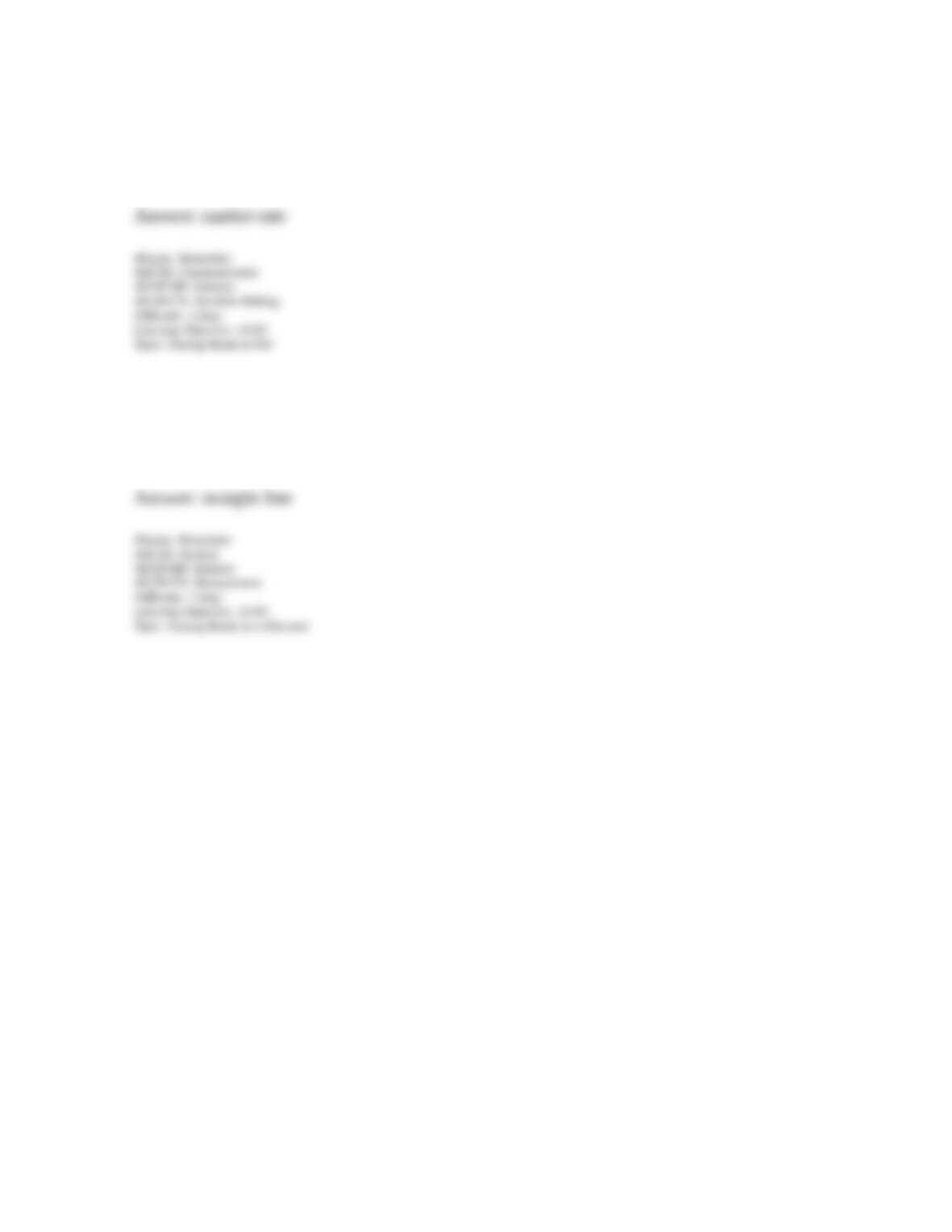Topic: Features of Bonds and Notes
Topic: Debt-to-Equity Ratio
Topic: Issuing Bonds at Par
149. Match each of the following terms with the appropriate definitions.
(a) Term bonds
(b) Coupon bonds
(c) Market rate
(d) Bond indenture
(e) Convertible bonds
(f) Bearer bonds
(g) Installment note
(h) Unsecured bonds
(i) Serial bonds
(j) Effective interest rate method
__________ (1) An obligation requiring a series of periodic payments to the lender.
__________ (2) Bonds that are payable to whoever holds them; also called unregistered
bonds.
__________ (3) Bonds that are backed by the issuer's general credit standing.
__________ (4) Bonds that are scheduled for maturity on one specified date.
__________ (5) The contract between the bond issuer and the bondholders; it identifies the
rights and obligations of the parties.
__________ (6) An accounting method that allocates interest expense over the bonds' life
in a way that yields a constant rate of interest.
__________ (7) Bonds with interest coupons attached to their certificates; the bondholders
detach the coupons when they mature and present them to a bank or broker for
collection.
__________ (8) The interest rate that borrowers are willing to pay and lenders are willing to
accept for a particular bond at its risk level.
__________ (9) Bonds that can be exchanged by the bondholders for a fixed number shares
of the issuing corporation's common stock.
__________ (10)Bonds that mature at more than one date and are usually paid over a
number of periods.
1. G; 2. F; 3. H; 4. A; 5. D; 6. J; 7. B; 8. C; 9. E; 10. I
Copyright © 2016 McGraw-Hill Education. All rights reserved. No reproduction or distribution without the prior written consent of
McGraw-Hill Education.
10-69

























































































